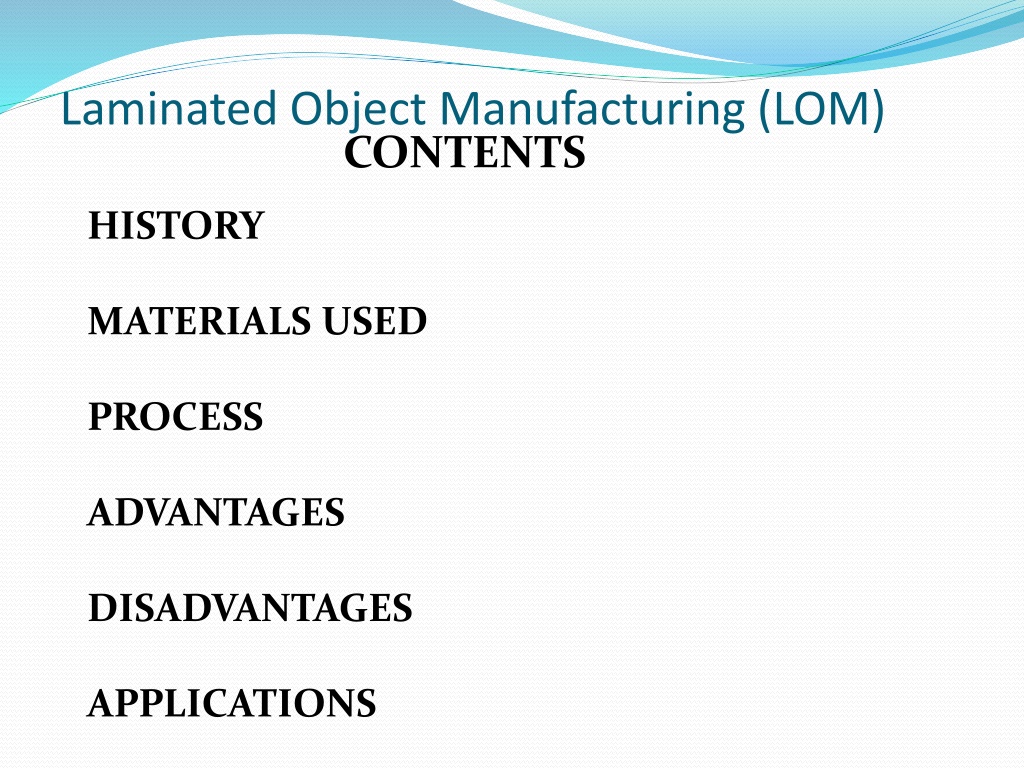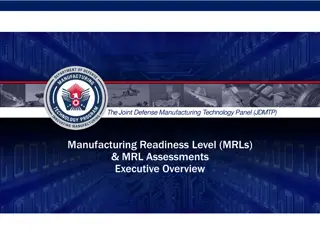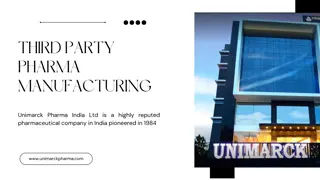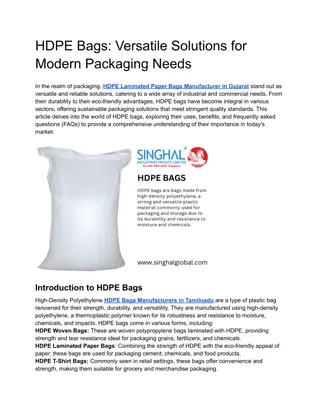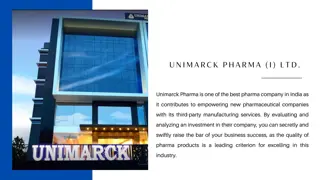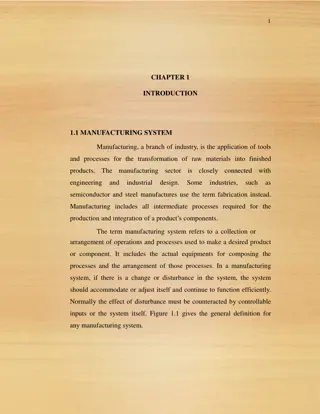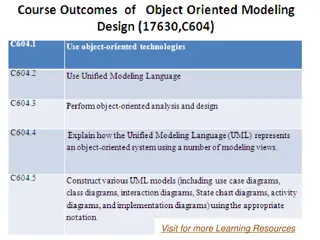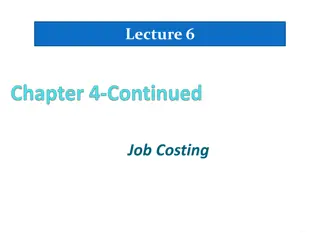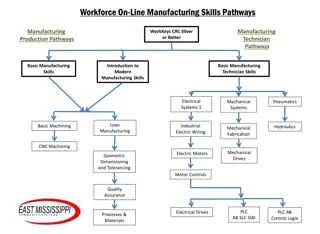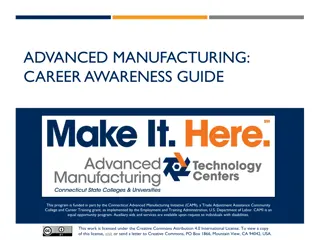Laminated Object Manufacturing (LOM)
Laminated Object Manufacturing (LOM) is a 3D printing technique that uses layers of material to create objects. The process, materials used, advantages, disadvantages, and various applications of LOM are explored in this content. LOM is known for its cost-effectiveness, easy post-processing, and capability to create large-scale prototypes. While it has limitations such as lower surface quality and longer production time compared to other 3D printing methods, LOM finds applications in industries like aerospace, automotive, and architecture.
Download Presentation

Please find below an Image/Link to download the presentation.
The content on the website is provided AS IS for your information and personal use only. It may not be sold, licensed, or shared on other websites without obtaining consent from the author.If you encounter any issues during the download, it is possible that the publisher has removed the file from their server.
You are allowed to download the files provided on this website for personal or commercial use, subject to the condition that they are used lawfully. All files are the property of their respective owners.
The content on the website is provided AS IS for your information and personal use only. It may not be sold, licensed, or shared on other websites without obtaining consent from the author.
E N D
Presentation Transcript
Laminated Object Manufacturing (LOM) CONTENTS HISTORY MATERIALS USED PROCESS ADVANTAGES DISADVANTAGES APPLICATIONS
Laminated Object Manufacturing (LOM) Current market leaders - Mcor Technologies (Ireland) - Solido (Israel) - Strataconception (France) - Kira Corporation (Japan) Laminated Object Manufacturing (LOM) was developed by Helisys of Torrance, CA, in the 1990s. Helisys went out of business in 2000 and their LOM equipment is now serviced by Cubic Technologies. Equipment picture Mcor Technologies Matrix 300+ (uses A4 paper and water-based adhesive) Courtesy, Cubic Technologies 2
Laminated Object Manufacturing Called LOM. (Helisys) Paper is coated heat-activated glue so it will stick. (spool) Paper is bonded with last piece with heated rollers. Design is cut out of paper with a laser. The excess paper is cross hatched for removal. Produces large parts. Wood like texture 3
Laminated Object Manufacturing (LOM) In this technology, objects are built by gluing profiled pieces of paper, plastic, or another material in a layered manner. The paper used is has one of its surfaces coated with a glue that melts when heated.
Materials Used: While the original system had used Kraft paper, other materials were introduced progressively. Polymeric material Polymer matrix composite Composites for tooling Metals Ceramics
Laminated Object Manufacturing (LOM) 1. Sheets of material (paper, plastic, ceramic, or composite) are either precut or rolled. 2. A new sheet is loaded on the build platform and glued to the layer underneath. 3. A laser beam is used to cut the desired contour on the top layer. 4. The sections to be removed are diced in cross- hatched squares; the diced scrap remains in place to support the build. 5. The platform is lowered and another sheet is loaded. The process is repeated. 6. The product comes out as a rectangular block of laminated material containing the prototype and the scrap cubes. The scrap/support material is separated from the prototype part. 7
Laminated Object Manufacturing Figure 34.5 Laminated object manufacturing.
Laminated Object Modeling (LOM) Paper is pulled across the table Laser beam cuts the outline of the part, plus removal grids A large, fixed size rectangle surrounding the part is also cut. The table is lowered by t (= paper thickness) Fresh paper rolled on top of the previous layer Laser cuts new layer A heated roller activates glue to stick the fresh layer Repeat steps 4-7 to complete part Break away removal blocks to get final part
ADVANTAGES Relatively high-speed process Low cost (readily available materials) Large builds possible (no chemical reactions) Parts can be used immediately after the process (no need for post-curing) No additional support structure is required (the part is self-supported) A variety of organic and inorganic materials can be used Environmentally friendly
DISADVANTAGES Removal of the scrap material is laborious Emission of smoke or fumes Can be fire hazard Finish, accuracy and stability of objects not as good as materials used with other RP methods The z resolution is not as high as for other technologies Limited material set Need for sealing step to keep moisture out
KEY APPLICATION AREAS Investment casting Pattern Making Concept verification Masters for silicon rubber injection tools Decorative Objects
Laminated Object Manufacturing (LOM) KEY METRICS Maximum build size 40in x 40in x 20in Resolution in (x,y) +/- .004 in Resolution in z Variable Speed Medium Cost Low Available materials Paper, Plastic Sheet 13
LOM Examples 14
LOM: companies, applications Original technology developed by Helisys Inc.; Helisys acquired by Corum. 1. Cubic Technologies Inc [www.cubictechnologies.com] 2. KIRA Corp, Japan [www.kiracorp.co.jp] prototyping [source: Corum Inc] [source: KIRA corporation]
